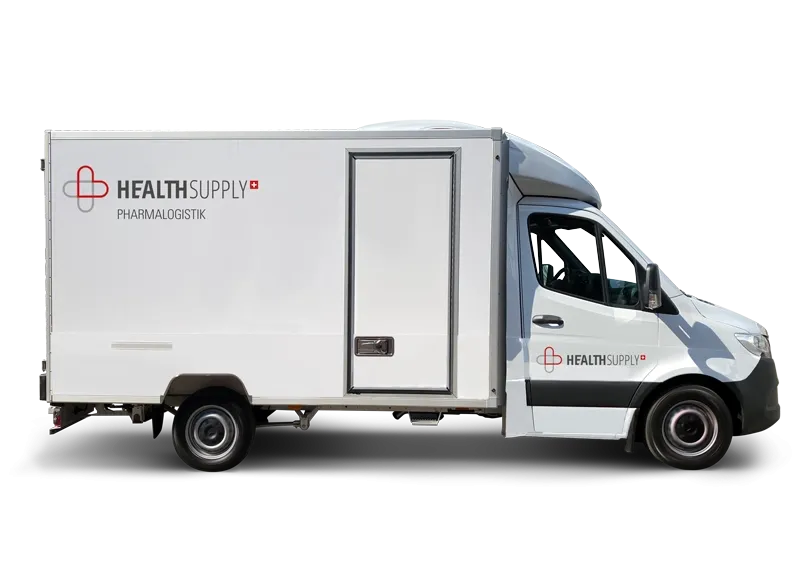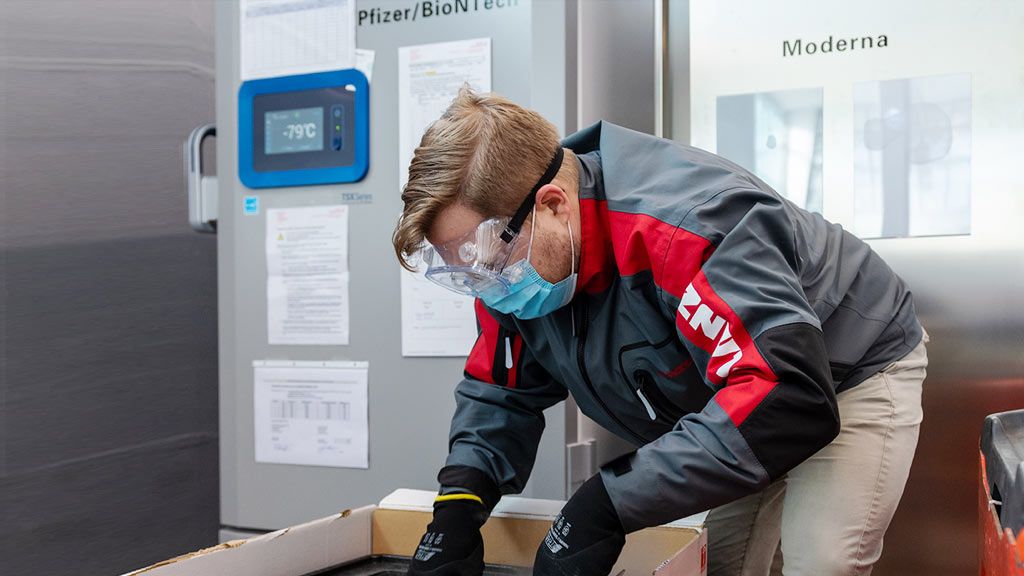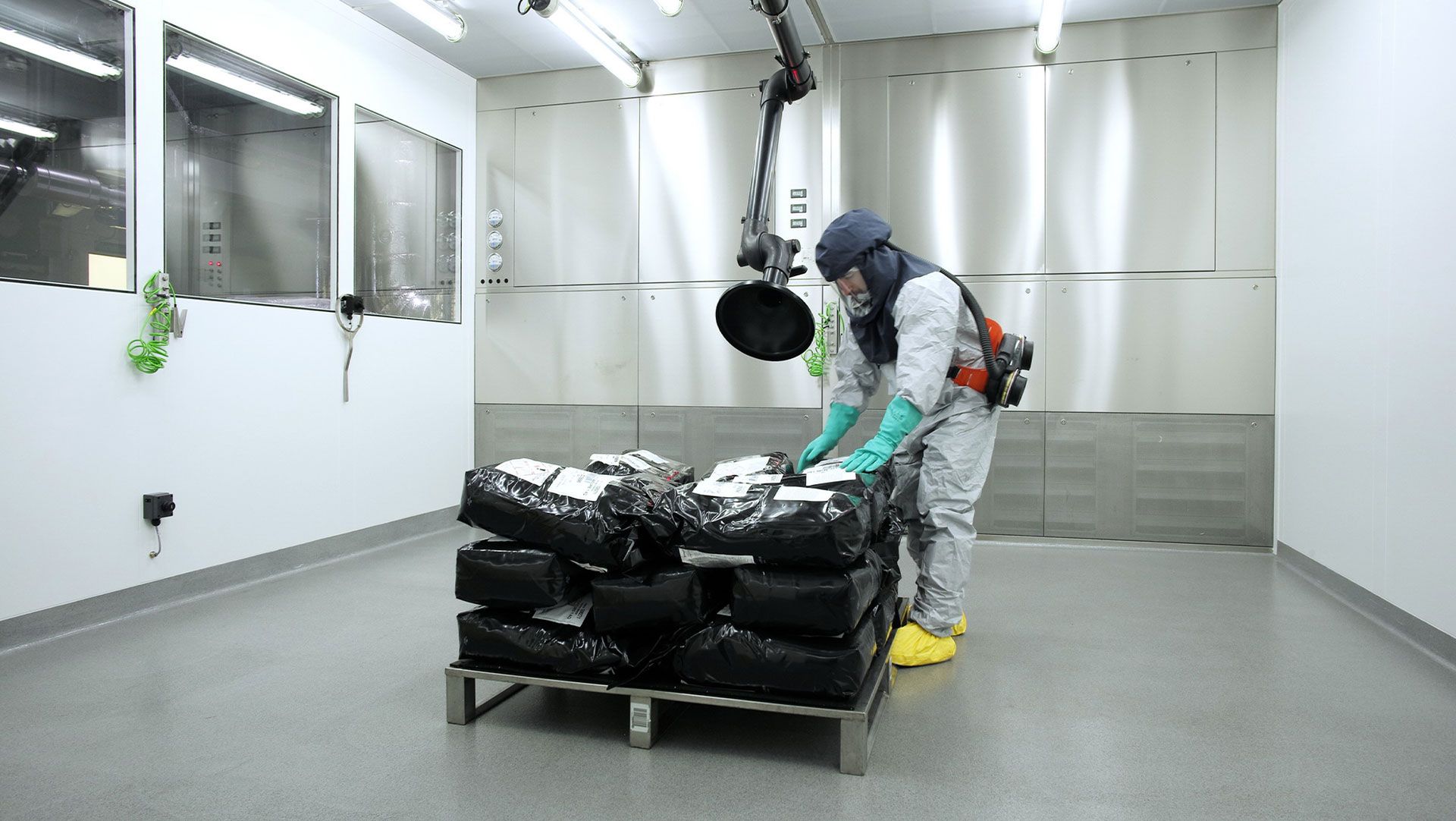- Transport
- Warehouse logistics
- Total solutions
- E-commerce
- Replacement parts logistics
- Event logistics
- Fitness
- Food
- Hazardous goods
- Household/professional appliances
- Home + garden
- Home electronics
- High-end logistics
- Home/personal care
- Medical technology
- Furniture
- Outsourcing
- Pharmaceuticals and healthcare
- Production supply
- Repair logistics
- Supply chain management
- About us
- Contact
- EN
- Home
- Total solutions
- Pharmaceuticals and healthcare
The fine art of high specialisation: Pharmaceutical logistics
In this key sector, logistics plays a central role. It’s not just a strictly regulated part of your value creation, but also an extremely cost-relevant factor. We have specialised in pharmaceutical logistics and know the special requirements of GDP/GMP/GxP, Swissmedic and other authorities. As part of our warehouse logistics, we also carry out samples, a range of additional GMP services and handling of aggregated or specialised pharmaceutical shipments – such as for air freight transport.
Pharmaceutical transport
Whether it’s a parcel or general cargo shipment, we can handle the distribution of class A, B, D and E medications, disposable medical care and hygiene supplies, reusable care supplies, surgical instruments and sterilisation supplies to hospitals, specialised clinics, medical practices, homes, pharmacies, drug stores, health food stores, laboratories and even to the patient.
GDP/GMP conformity
The ‘Good Distribution Practice of medicinal products for human use’ (GDP) is intended to control your sales chain and ensure the quality and integrity of your medicines. The ‘Good Manufacturing Practice’ (GMP) standards apply to production practises. These international regulations govern, among other things, the requirements for hygiene, premises, equipment, documentation and controls that we fulfil on your behalf. Our transport and warehouse logistics for pharmaceutical and healthcare products are 100% GDP/GMP compliant and can present all the certificates that you request. Read more about our pharmaceutical transports under GDP guidelines.

Health Supply AG – your Swiss pharmaceutical logistics provider
Together with Galenica, we have launched the largest health logistics network in Switzerland, under the name Health Supply AG. We are therefore combining Galenica’s network competence and our logistics expertise under a single roof. The result? Integrated overall solutions for one of Switzerland’s most important supply sectors.
Would you like to send medication and medical products as small consignments throughout Switzerland (including peripheral regions) within 24 hours, in accordance with GDP guidelines?
Warehouse services
We offer a range of warehouse logistics services for your the pharmaceutical and healthcare products. What they all have in common is safety and quality by Planzer.
Goods receipt/goods issue
We ensure uncompromising incoming and outgoing goods inspections according to your inspection criteria as a manufacturer or retailer. This includes inspection of the vehicles and products as well as the entry of their data.
Storage
For medicines and sterilisation materials, we provide the ambient and chilled temperature ranges for GDP-compliant storage. For narcotics, there are separate security provisions with which we also comply fully.
Picking
In the pick-by-scan approach, we pick your goods in the manner appropriate for the recipient. In other words, in a way that they can be used directly at the clinic. We process aggregated shipments and procure consumable materials where necessary.
Packing
We repack your (sales) packaging or apply the desired labels. In short: we pack them.
Shipment preparation
As soon as we receive the shipment order, we prepare your pharmaceutical and healthcare products for shipment, whether on pallets, in medicine carts, dollies, boxes or as parcels.
Value-added services (VAS)
Our GMP additional services include repackaging tasks, labelling, re-labelling, small batch formation and data logger handling, from the configuration and removal to reading out the logger data. This area also includes the technical inspection of instruments, the provision of dollies for the floor or the assembly of OP kits. We also operate a shuttle for a cantonal sterilisation centre seven days a week.
Distribution
For time reasons, pharmaceutical and healthcare products often arrive or travel onward by air. Special regulations and standards apply for this mode of transport. Here, we bring our experience with international transport and air freight transport to bear for you. For pharmaceutical transports by road, we ensure full compliance with the applicable GDP guidelines.
Returns management
The pharmaceutical industry is subject to particularly strict rules for the proper handling of returns, whether delivery aids or goods. With the expertise of our pharmaceutical logistics specialists and the latest technologies, we process your returns precisely according to your standard operating procedures.
Disposal
When medicines need to be destroyed, we conduct the disposal in a controlled and proper manner.
Customs clearance
The pharmaceutical and healthcare business is by nature an international one. We therefore also handle the customs clearance for your products and spare you the customs formalities. Learn more about our best practices for customs clearance.
Maximum safety
Access to pharmaceutical warehouses is strictly regulated and monitored. The physical security of our warehouse locations fulfils all standards for the presence of pharmaceutical and healthcare products. We have established a standby service for each location to ensure the ongoing control and monitoring of our building and our IT landscape.
Swissmedic approvals
Whenever your products require a Swissmedic approval for transport and warehouse logistics, we obtain it. This involves regular reviews and detailed reporting.
Sampling
We pull samples and inspect random samples upon goods receipt to check whether the pharmaceutical and healthcare products meet the stringent specifications. Only then do we approve the shipments for subsequent stages in the pharmaceutical logistics chain.
Traceability
According to estimates, some 10% of the medicines in circulation worldwide are counterfeit. This type of fraud is only possible where there are gaps in the logistics chain. That’s why we ensure 100% traceability of your articles from goods receipt at our location to the wholesaler or end customers.
Data movements, documentation and archiving
We comprehensively capture data related to your shipments and store the key documents in our electronic archives. Every activity is tagged with a precise date and the exact time. The data flow on your pharmaceutical and healthcare products can be viewed and accessed by you around the clock.
Serial Shipping Container Code SSCC
The SSCC – also called the shipping unit number – is a globally unique and one-of-a-kind 18-digit number used to identify a shipping unit such as a container, pallet or parcel. In order to issue SSCCs, we have a corresponding licence from GS1 Switzerland.
Pallet identification PID
Upon goods receipt, we record every delivery with a mobile data recording device. Every pallet found to be correct receives a storage label, the so-called pallet identification or PID. We assign this to all storage-specific data such as the lot number, expiry date, quantity and SSCC.
Serialisation and aggregation
In pharmaceutical logistics, normal traceability to lots or the pallet level is generally not sufficient. Products are assigned serial numbers down to the consumer unit. To enable a clear overview of the logistics process in spite of the massive amounts of data, we aggregate all the units on the next-higher level. If we detect a deviation between our serialisation and your ERP data, the goods are automatically blocked until the matter is resolved. So the entire supply chain remains maximally transparent for you.
Traceability tests
We conduct a traceability test at all warehouse locations with food or pharmaceutical products once a year. In the process, we comprehensively and strictly check whether we are still keeping our promise.


Information flow
Find out here how we exchange transport and warehouse logistics data with our customers and what options our customer portal offers.
![]()
![]()
![]()
![]()







